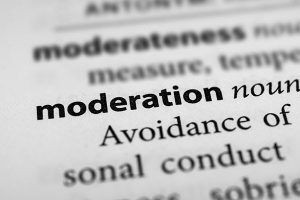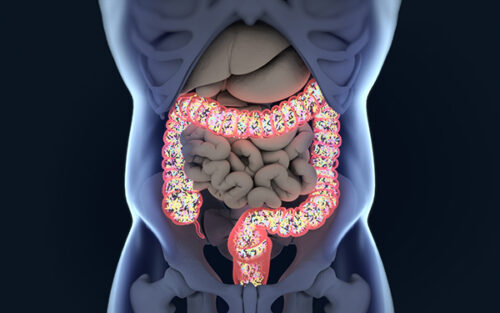Lose a Half Pound a Day by Correcting Your Setpoint
We have collected data on 280 people during the past 2 years (since moving to our new location in Santa Rosa, California) and the results show that overweight and obesity are cured most effectively with major changes in the composition of the diet – no gimmicks and no hunger – with unlimited quantities of delicious foods.
People who eat as much as they want of lasagna, mu shu Chinese vegetables and rice, Tex-Mex Casserole, Bean Burritos, and highly flavorful soups with breads lose, effortlessly, on average, a half a pound of excess body weight daily (with very little daily exercise).
Those scoffing at 3.5 pounds of weight loss in 7 days, please consider this means 14 pounds in a month, and 84 pounds in half a year – a very reasonable amount to lose by eating delicious foods. And the weight loss continues until you reach your ideal body weight because you have finally tuned your metabolic processes of homeostasis to your new, desired setpoint.
Weight Loss at the McDougall Live-in Program*, Santa Rosa, California
|
|
# |
Age |
Initial Wt. |
Final Wt. |
Loss in 7 Days |
| Total | 280 | 58.5 | 191.8 (87.2) | 188.3 (85.6) | 3.5 (1.6) |
|
Men |
105 |
62 |
214.9 (97.7) |
211.0 (95.9) |
3.9 (1.8) |
|
Women |
175 |
57 |
178.5 (81.2) |
175.3 (79.7) |
3.2 (1.5) |
These figures include everyone who completed the program – including those who gained weight because they started underweight, and those who gained ‘water weight’ from discontinuing diuretic blood pressure pills.
*Information is available at www.drmcdougall.com.
 Homeostasis and Your Setpoint
Homeostasis and Your Setpoint
Homeostasis is the process by which your body maintains itself in a stable condition. Maintenance of this equilibrium within the body is accomplished by internal mechanisms, such as regulations of appetite, physical activity levels, energy expenditure, and hormones. This stable condition has also been described as your biological setpoint. Ideally this setpoint would result in you being trim, active, and healthy. When it comes to body weight, however, over 2/3 of the US population have their setpoint set too high. They are maintaining a stable condition, through homeostasis, that is undesirable – both for appearance and health. Trapped by this setpoint, every attempt at dieting ends in failure.
Maintaining Your Setpoint
The concept of setpoint has been established by experiments that force people to temporarily change the amount they eat. When people are asked to diet (eat fewer calories), they lose weight, but once they return to unrestricted eating, they regain back to their usual weight (back to their biologic setpoint). The same occurs when people are forced to eat more than usual – they gain weight, but when allowed to eat without restrictions, they return to their usual weight (setpoint). Based on these observations you will feel out of control, because regardless of how hard you try to ‘eat less’ you will eventually end up back at your fixed, predetermined, body weight. The concept of setpoint has also helped people overcome guilt caused by failing to lose weight – after all, it is really not their fault – their body is established at an un-moveable setpoint.
Adjustments for Survival
Your body always makes the best adjustment possible in order to survive and maintain a steady state (homeostasis), especially under adverse conditions. For example, stress yourself with cigarette smoking and appropriate changes result, such as mucous production and coughing, in order to eliminate toxic pollutants from the lungs and an increase in enzymatic activities to detoxify the poisons that enter the bloodstream. These adaptions remain until the stress from the smoke is removed – then the body readjusts to the new (and healthier) condition.
When your body is nourished with very rich foods, adaptions are made. Diets high in fats force the body to a new, but stable state, where the excess energy is stored in the abdomen, buttocks, and thighs. This adaption might be desirable for people experiencing periods of famine – that extra stored fat would allow them to survive during food scarcity. However, in our society where food is always abundant, this new setpoint forced by excess fat calories is detrimental.
Diet Composition Moves Setpoint
Your setpoint is determined by the composition of your diet – in other words, the portions of the macronutrients – the fats, carbohydrates, proteins, dietary fibers, and water. Dietary fats (including vegetable oils) are the primary force for moving the setpoint higher (toward obesity). Fat’s powerful effects occur because it is very calorie dense (9 calories/gram); fat offers little satisfaction for the hunger drive, and the body effortlessly stores fat. Higher amounts of carbohydrate lower the setpoint because carbohydrate is less calorie dense (4 calories/gram), carbohydrate is very satisfying to the appetite, and excess is easily burned off, rather than stored. The amounts of protein, fiber, and water in the foods have only minor influences on your setpoint.
Diet Composition Sets the Setpoint
|
|
Low |
Desirable Setpoint |
High |
|
Calories |
Low |
Moderate |
High |
|
Fat |
Low |
Low |
High |
|
Carbohydrate |
Low |
High |
Low |
|
Fiber |
High |
Moderate |
Low |
Your goal is to establish a trim, active, and healthy stable condition (setpoint). A natural, low-fat, plant-food-based diet – a diet of unprocessed starches with green and yellow vegetables and fruits – is the correct diet for the human body – and allows you to look, feel and function your best. If you are now overweight, the McDougall diet and moderate exercise will change your stable state (setpoint) from one of being too fat, to one of being trim.
The setpoint also acts to cause people who are underweight to gain on the McDougall Program. Two ‘starved appearing’ women attended our Santa Rosa Live-in Program recently. Their frail condition was caused by a self-imposed diet focused mostly on very low-calorie green and yellow vegetables with very few starchy vegetables (rice, breads, potatoes, etc.). As a result, they achieved a state of homeostasis characterized by being underweight. This is an expected adaption which allows an improved chance for survival during times of food scarcity – underweight people live on fewer calories.
When the composition of their diet was changed during the live-in program to one based on higher calorie starches (rather than very low-calorie green and yellow vegetables) their setpoints changed appropriately. After seven days of consuming this new diet, they had each gained 6 pounds. The exact same buffet of delicious foods caused weight loss in our overweight participants. Therefore, whatever you weigh right now, the principle of setpoint is so fundamental that changing the composition of your diet always works for you – you can count on it, without ever counting a calorie again.
Next month I will discuss refinements you can make in order to fine-tune your setpoint.
Billions of People Prove Setpoint Works for Everyone
You are not alone. The right food choices to maintain an ideal stable state (setpoint) have been made by most of the people who have ever walked on this planet. Even now, 60% of the world’s population consumes foods with a composition that causes them to have a trim setpoint. Notice that everyone is thin and looking young – even the shopkeepers, teachers, homemakers, weavers, and government officials; people who exercise very little. Examples of populations of trim people living on starch-based diets include:
People from the Middle East eating platefuls of chickpeas and rice. Africans with diets of beans and grains. The people in Peru living on potato-based diets. New Guinea mountain people with 90% of their diet from sweet potatoes. The farmers in central Mexico living on corn tortillas, beans, and rice. Asians from China to Thailand thriving on rice-based diets.
You need only look at the United States, Western Europe, or any other place where a high-fat diet and fat people have become the norm, to observe the effects rich foods have on setpoint.
References:
1) Tremblay A. Dietary fat and body weight set point. Nutr Rev. 2004 Jul;62(7 Pt 2):S75-7.
2) Keesey RE, Hirvonen MD. Body weight set-points: determination and adjustment.
J Nutr. 1997 Sep;127(9):1875S-1883S.
3) Astrup A, Astrup A, Buemann B, Flint A, Raben A. Low-fat diets and energy balance: how does the evidence stand in 2002? Proc Nutr Soc. 2002 May;61(2):299-309.
4) Peters JC. Dietary fat and body weight control. Lipids. 2003 Feb;38(2):123-7.
5) Schrauwen P, Westerterp KR. The role of high-fat diets and physical activity in the regulation of body weight. Br J Nutr. 2000 Oct;84(4):417-27.
6) Hays NP, Starling RD, Liu X, Sullivan DH, Trappe TA, Fluckey JD, Evans WJ. Effects of an ad libitum low-fat, high-carbohydrate diet on body weight, body composition, and fat distribution in older men and women: a randomized controlled trial.
Arch Intern Med. 2004 Jan 26;164(2):210-7.
Recommended Articles

The Myth of Moderation: Do All Foods Really Fit?

Making the Change to a Healthy Lifestyle Work, Part 1 - Why Change?





